
(Source: The Chicago Reporter, Winthrop Family and Black Resilience on North Side of Chicago
by Gayatri Reddy and Anna Guevarra
The Giles extended family lived for several generations on 4600 Block of North Winthrop Avenue, a narrow curving street right behind the Broadway shopping district. The block was one of the first African American northside enclaves in Chicago beginning before 1920.
Walled in by a decades-long restrictive covenant — engineered in 1929 by Uptown’s business/real estate elites — that effectively blocked further African American settlement in Uptown, the families on Winthrop maintained their little community with determination and dignity. (The families organized the first post WW II fight against displacement in 1947 when they were threatened with demolition by a move to replace a chunk of the limited housing with warehouses at a time when there was a critical housing shortage, especially for African Americans.)
A WW II veteran Purple Heart said, “they can keep the Purple Heart and let me keep my home.” They refused to give up the community they had sustained. Winning the support of the Lerner newspaper, they won the fight. There were many battles to come! Read Full Article on Winthrop Family.

Uptown has a special place in Chicago African American History. This history began before 1920 when Winthrop Street from Wilson to Lawrence was one of the earliest 20th-century enclaves of Black settlement on Chicago’s Northside. It continued in the 1960s with the emergence of the dynamic and inspiring “two Dovies” — Dovie Thurman and Dovie Coleman, part of an extended African American family who came to Uptown from St Louis, who became important leaders of the poor people’s movement in Uptown, and were founding mothers of Voice of the People.
Then, in the late 1960s, Bobby Lee, a Chicago Black Panther Party (BPP) leader came to Uptown and worked with the Young Patriots Organization (poor white southern youth) to successfully organize people for the establishment of a Free Health Clinic and other survival programs modeled on the BPP 10-Point Program. (In 2021, Voice remembered the “Survival Days” at the Sunnyside Mall Rededication & Blues Concert.)
In the 1970s the importance of the BPP to Uptown’s struggle continued in the organizing done by the Intercommunal Survival Committee, the Chicago Area Black Lung Association and the Heart of Uptown Coalition against displacement and for community control of police, health, public education. etc.
In the early ’70s, Marlene (Maudie) Barton broke the longstanding color line on Kenmore from Irving to Montrose and became a rock of stability and community through the crises of arson for profit, displacement and police abuse and ultimately a leader of Voice of the People. (Hear her tell the story in the animated short film, How We Got Here.)
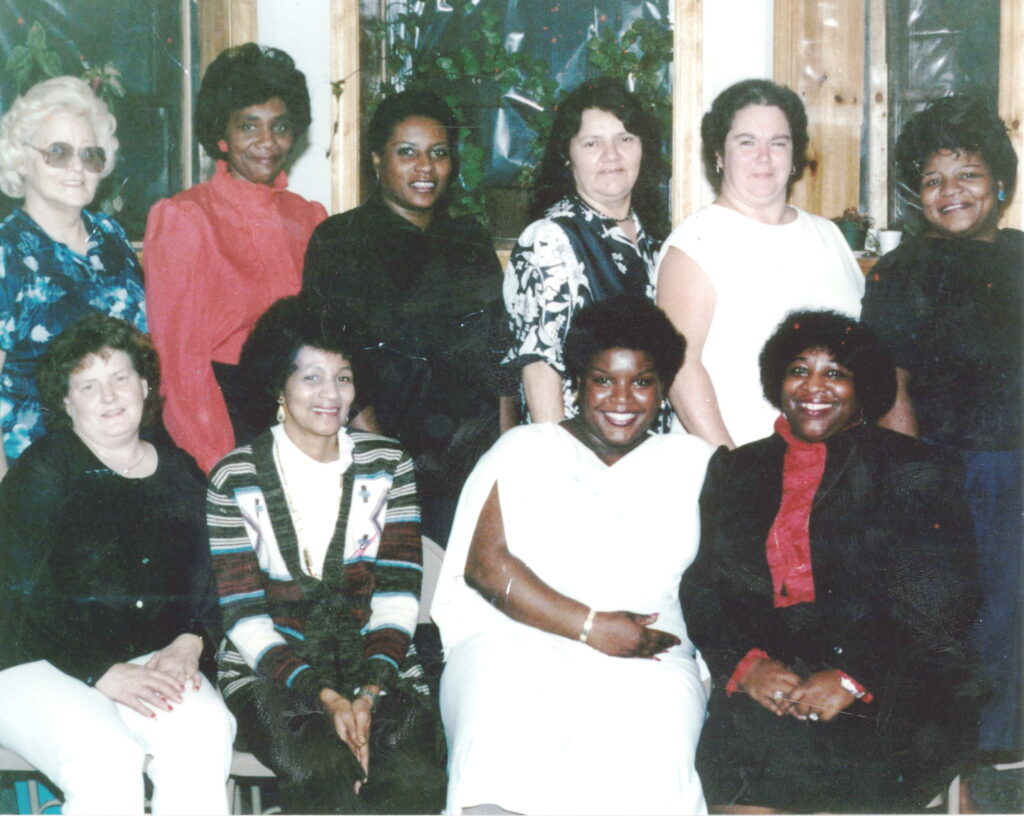
Thurman Leads poor peoples’ movement in Uptown. With her aunt Dovie Coleman, Dovie Thurman was an important leader in the welfare rights and civil rights struggles of the 1960s in Uptown and was a “founding mother” of Voice of the People.
She broke the color line on Clifton Street and together with her friend Peggy Terry, a poor white southerner who stood by Dovie in the face of racist threats, became a leader in the battle against the destruction of the housing on Clifton and Racine for Truman College. In the 1990’s Dovie Thurman became a minister and led a vibrant community congregation, mentoring and inspiring young people who she drew to it.
Northside Action for Justice (NA4J), an advocate-partner of Voice of the People, remembers her legacy annually when they recognize a community activist with an award in her name.
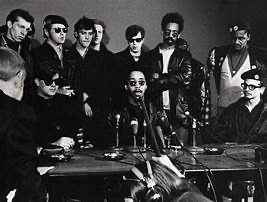
The Black Panther Party in Uptown
Press conference announcing the formation of the Rainbow coalition, 1969. The Black Panther Party under Fred Hampton’s leadership led in forming the original Rainbow Coalition in 1969 bringing together The BPP, the Young Lords Organization (YLO) Puerto Rican youth (then based in Lincoln Park) and the Young Patriots Organization (Appalachian poor white youth in Uptown). BPP organizer Bobby Lee worked with the YPO in Uptown with a resulting Free Health Clinic and Free Breakfast for Children Program modeled on the BPP’s programs of “survival pending revolution.”
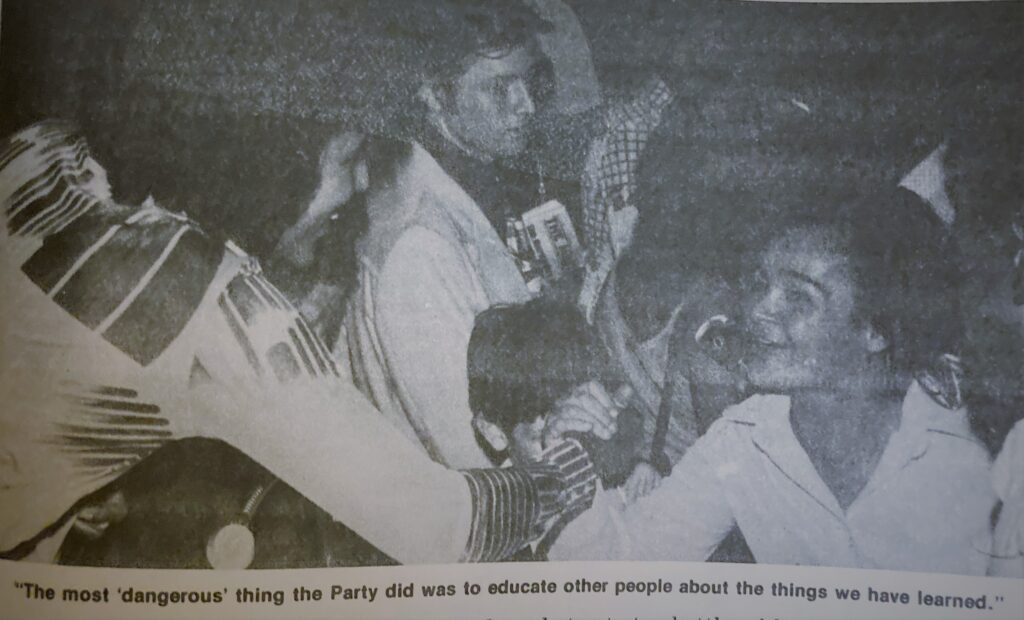
Elaine Brown, Chairwoman of the Black Panther Party shown greeting crowd at mass meeting at Uptown’s People’s Church. Activists rallied in support of the Hampton family’s successful lawsuit for the murder of Fred Hampton, the Deputy Chairman of the national party, and for justice for Huey P. Newton.
Jerry Cleveland, poor white and former prisoner (below), selling the BPP newspaper in Uptown, while campaigning for Cha Cha Jiminez (Young Lords Leader) for alderman and raising money for the annual Christmas Survival Program.
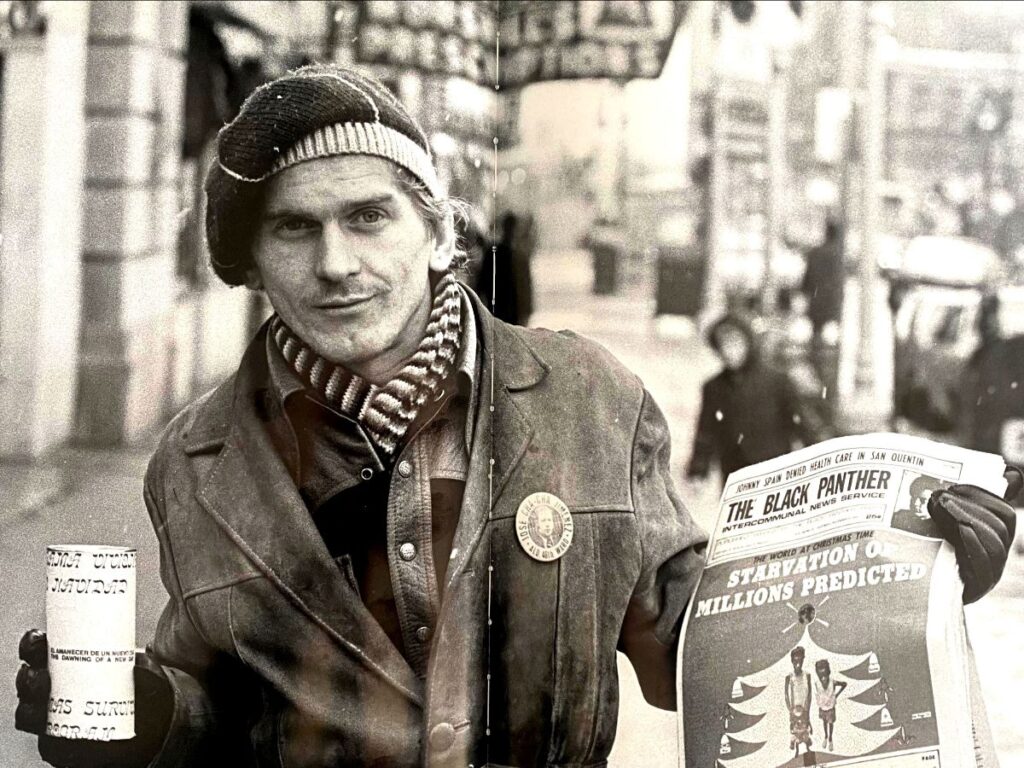
The Black Panther Party’s place in Uptown’s history continued through the 1970s. The Intercommunal Survival Committee (ISC), a core of white organizers working under the direction of the BPP, organized extensive survival programs, voter registration drives, a multiracial mass movement against displacement, sparking the Heart of Uptown Coalition and the Chicago Area Black Lung Association. Under the cry “circulate to educate, educate to liberate” these organizations formed extensive networks for distribution and study of the BPP newspaper and “Keep Strong” Magazine, through which they combatted racism and promoted unity.
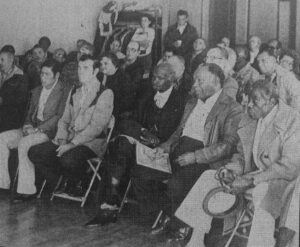
The Chicago Area Black Lung Assn learning from the Black Panther Party’s approach to peoples’ health.
Inspired by the heroic struggles in the coal fields and by the BPP’s pioneering work on Sickle Cell Anemia, the Chicago Area Black Lung Assn. fought for compensation, health care, recognition for Uptown coal field migrants and their families and led a mass movement for community-controlled health. Lawrence Zornes, disabled West Virginia coal miner and key Uptown leader founded and led CABLA for many years. (Read Zornes testimony to Fred Hampton in the ISC magazine “Keep Strong”.)
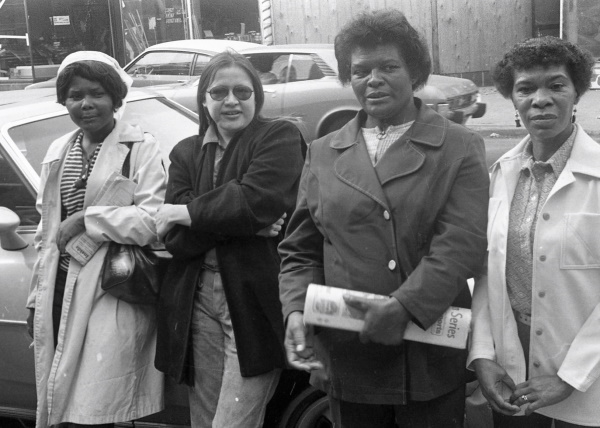
Florence Buckner (left), a Broadway-Buena tenant leader, along with other residents, were plaintiffs in the Avery case, a legal battle against displacement and for replacement housing.
In autumn 1975, with winter approaching and an evolving crisis of destabilization in Uptown, a politically connected developer, who had won the management of 75 units of HUD-owned, African American-occupied housing on Broadway and Buena summarily and brutally evicted all 75 families, having bought the buildings, as part of an envisaged large scale luxury residential and commercial development.
The African American families had few options and wanted to stay in their community. They organized and worked with the ISC and became the central movers of the historic Avery civil rights case, which alleged a conspiracy of the federal and local governments and private developers to destroy a racially integrated neighborhood and turn it into an exclusively segregated one. The suit delayed the plan for years, ultimately forced major changes in the plan that preserved the character of the Uptown community, and paved the way for 160 units of low-income scattered-site public housing in Uptown, which still exists today.
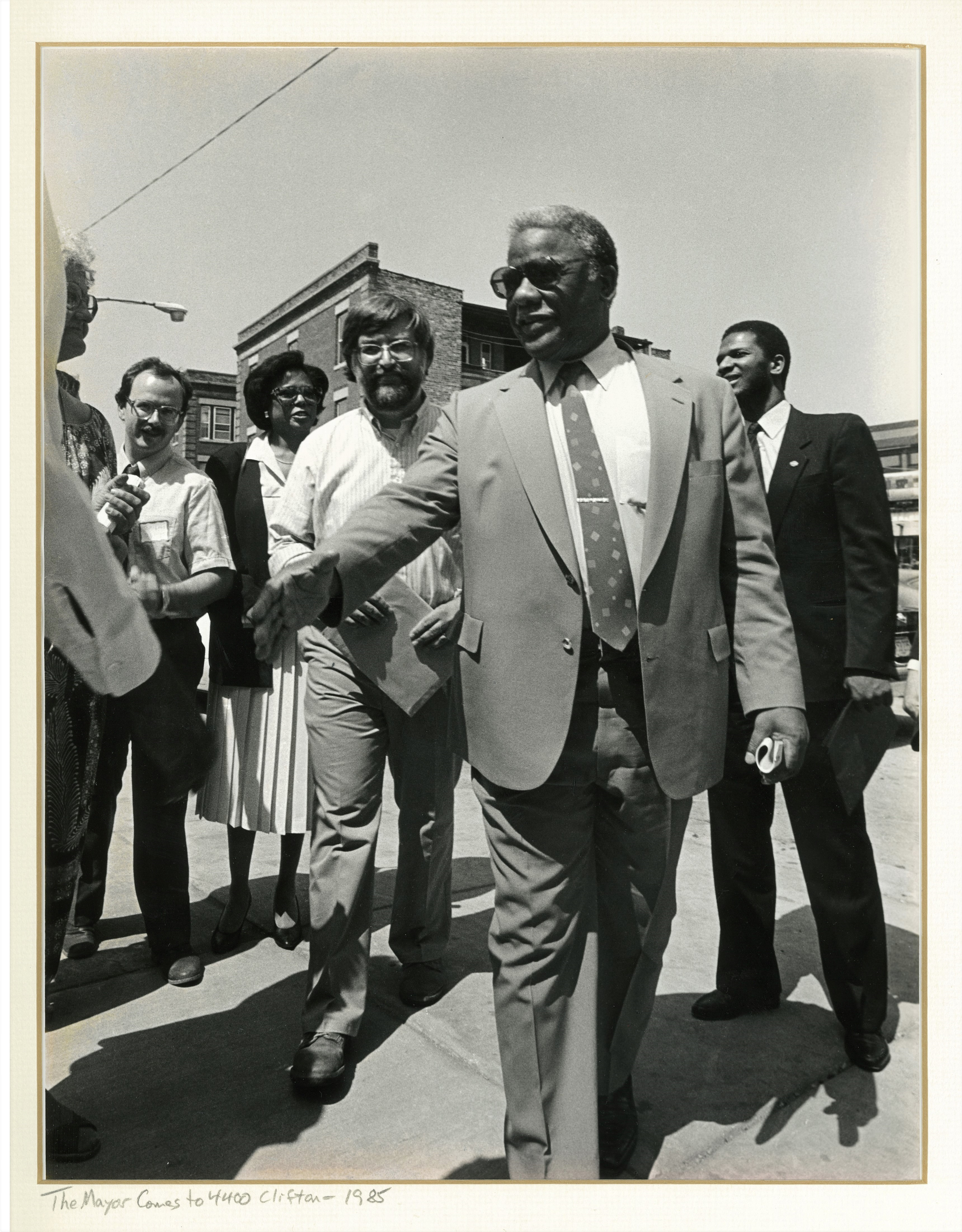
Also Shown, Tom Lenz (Executive Director) and Doug Dobmeyer (President)
Harold Washington, Chicago’s first African-American mayor was elected in 1983 by a mass political uprising against Chicago’s racist “plantation politics” of the regular Democratic machine which favored the wealth in the Loop over the neighborhoods. When he first ran in 1977 and even before, it was to the fighting multi-racial community of Uptown that he turned first to build and project a diverse peoples’ coalition in the face of the racial polarization drummed up by the Machine and the media. He led a “walk” around the Uptown neighborhood in 1977 to introduce himself to the people of Uptown.
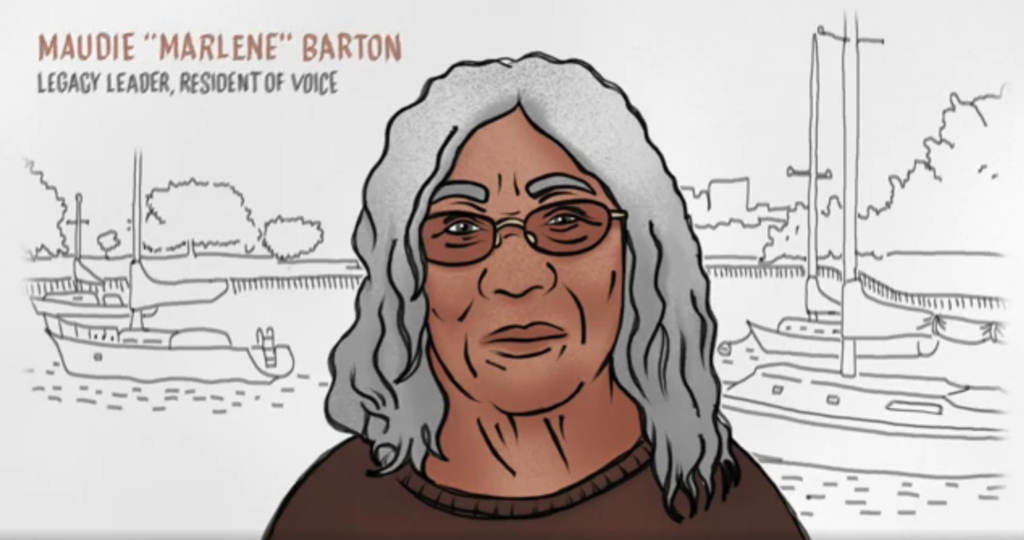
See her in animated short Diversity Video “How We Got Here”
Generations of leadership among Voice tenants. Marlene (Maudie) Barton broke the color line on Kenmore and Buena in the early 1970s and she and her family quickly emerged as a solid bulwark of community spirit, responsibility and stability to all the low income families living there — in the face of destabilization by slumlords, arson for profit and destabilization. She became active in the Heart of Uptown Coalition and ultimately a leader in Voice of the People, currently serving as Treasurer of the Voice Board.
The tradition of Dovie Thurman as African American leader in Uptown’s diverse community and as mentor to youth continues with Angela Clay, who grew up in Voice buildings and found guidance, strength and support there. Angela graduated from the local Uplift High School, where she later returned as mentor of youth in the Sustainable Community Schools Initiative, and received a degree in Public Policy from DePaul. She served as leader and past-president of Voice of the People (2012-2016), organized for ONE Northside and currently with Northside Action for Justice, and ran for 46th Ward Alderperson in 2019, where she made history as Uptown’s first female Black candidate, winning the seat in 2023. She is a role model for residents of affordable housing in Uptown.
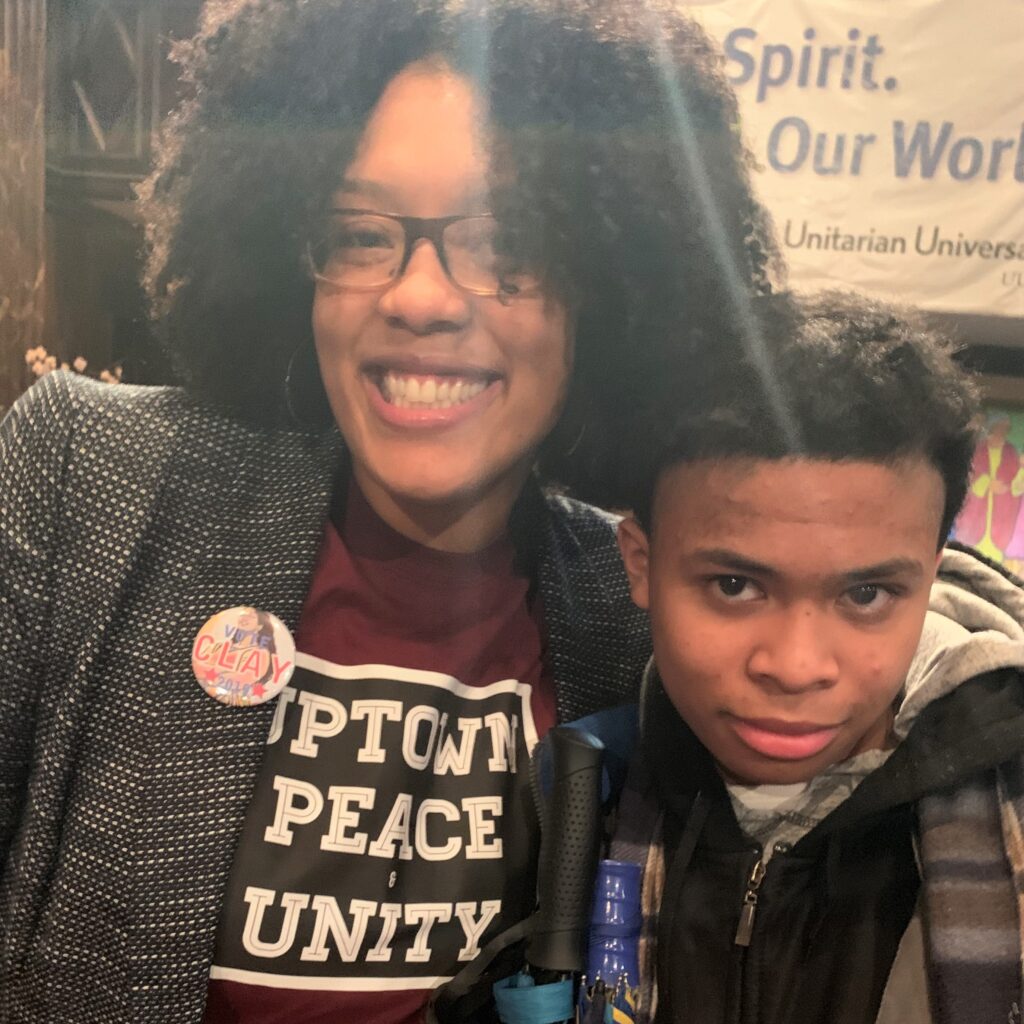
of the People and Alderperson of the 46th Ward
Special thanks to Paul Siegel, PhD, Vice-President of Voice of the People for his contributions to website history pages. Paul has a doctorate in American History and is a former Black Panther Party member and organizer for CABLA (Chicago Area Black Lung Association).
